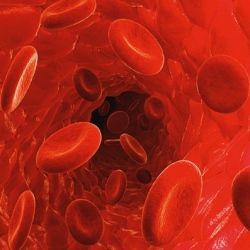
In the aftermath of a nuclear event, medical professionals have to quickly determine which victims they should treat for radiation poisoning. Right now, the only way they can estimate how much medication to give a patient is based on estimated distance from the radiation leak, or to look at how many white blood cells had died in a patient’s blood.
But at the moment it’s nearly impossible to be more exact within the 24 hours after the initial exposure, according to Popular Mechanics. Now, a team of researchers has found a tiny genetic indicator that reflects how much radiation the patient has been exposed to and the amount of damage it has done in the body.
For one kind of microRNA, there are more than 60 that have been used as biomarkers for various diseases, the code is almost identical in everyone, but radiation scrambles the code. Higher levels of radiation lead to more mutations.
Armed with knowledge of such a clear indicator of radiation damage, the researchers hope to create a test that could detect microRNA signatures, though the researchers admit that it won’t be easy to work around the ethical issues of exposing humans to radiation.
It’s not clear how long this type of test would take, but it would likely be faster than the current methods of determining radiation damage, and could be used in the first few hours after a nuclear event.
